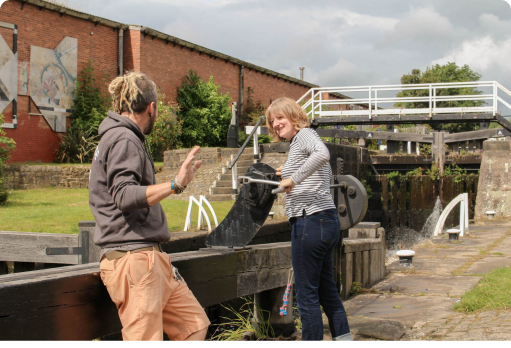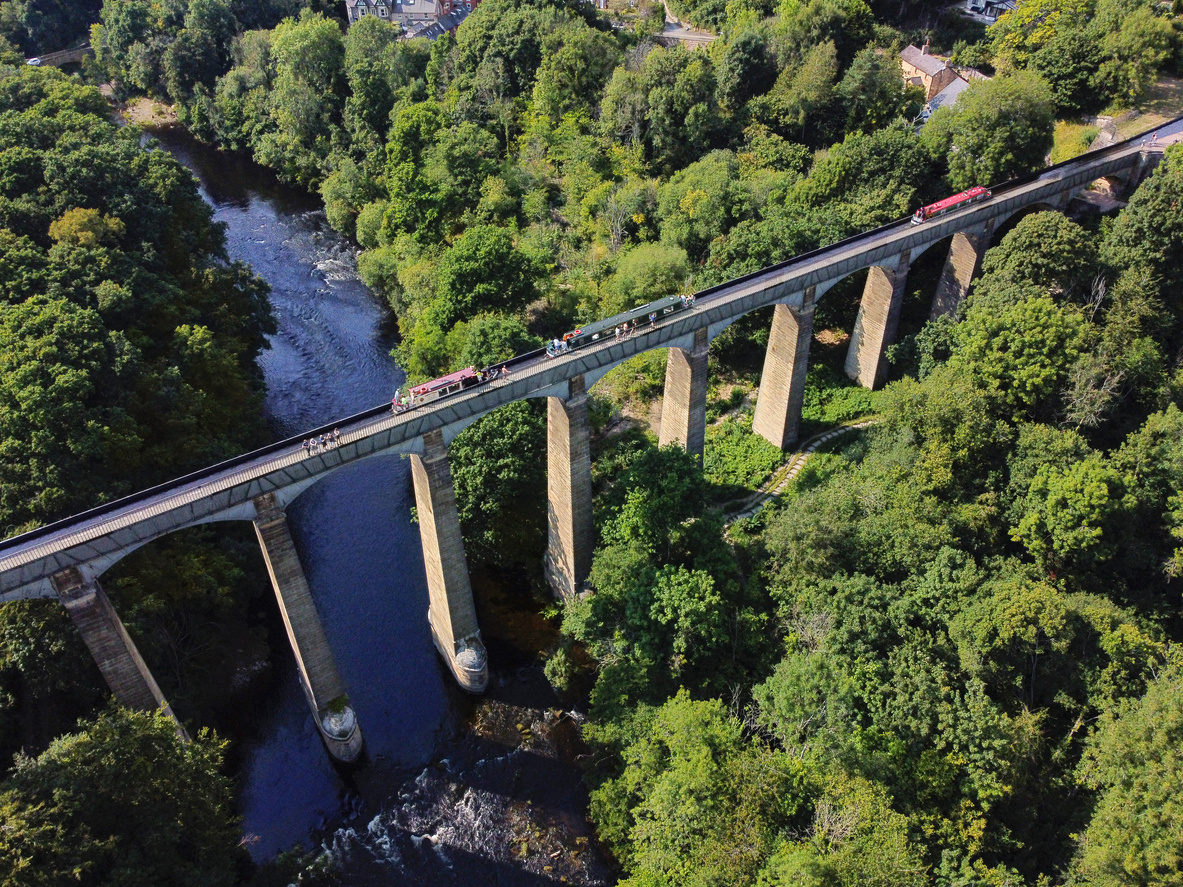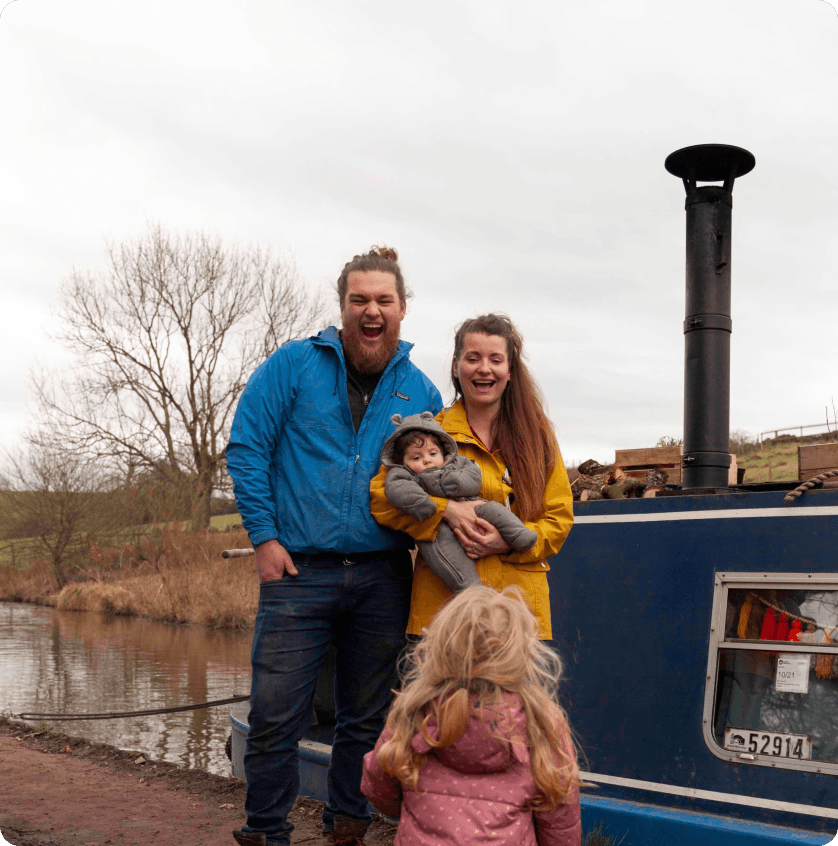Can we go on a canal boat holiday as complete beginners, having never stepped onboard a narrowboat before?
Yes absolutely, beginners are totally welcome and we love to introduce complete beginners to our inland waterways and this rather wonderful way to travel.
What to expect at the start of your first canal boat holiday.

When you arrive at one of our partners hire bases, introductions will be made and you’ll be given time to unload your belongings onto the hire boat. Once loaded a member of the team will take you through a thorough handover. This will include:
- - How to operate the boat and equipment that is included
- - The rules of navigation
- - How to use structures on the waterways, such as lift and swing bridges and locks
- - You’ll be joined for a cruise where you’ll be shown how to handle the boat and, depending on location and route chosen, you may also be shown though a lock or two.
- - All our partners give you very good instructions and will stay with you until you are happy to manage your hire boat on your own.
How to choose a start location
If you are new to canal boat holidays you may not be very familiar with the options in terms of which canal to choose, as such it can be a little overwhelming. All our bases offer fantastic holidays for beginners so you can't go far wrong. To narrow down your choice you may want to start with an attraction. You can also let us know who is in your party and where you are based & we can recommend something near you.

Pontcysyllte Aqueduct on the Llangollen Canal
Start with a particular attraction or area
With our planner map you can easily find holidays to specific attractions or locations, go to the canal holiday route planner page, zoom in to an area that suits you or select attractions to see the top attractions on or near the canal. You can select a route to see the available routes from that location.

Interior of Arbury based in Braunston on the Grand Union
By price or boat
All our hire bases offer fantastic holidays for beginners and no matter which base you choose you can't go too far wrong. So it may be as simple as finding a boat within your budget or with the features you are looking for.
FAQs
Do I need a license?
No, you don’t need a license for driving a narrowboat. Before you set out on your holiday, the holiday company will give you detailed instructions on how to handle your holiday boat and what to look out for while you are cruising the British waterways.
Where can I moor up?
You can moor everywhere along the towpath, as long as there is no sign that says otherwise and you are not causing an obstruction e.g stopping other boats from accessing the water-point or turning in a winding hole. Many people prefer to moor up inside towns or villages, but you can also moor up in the countryside.
How long can I moor up for?
Usually, you can moor for up to 14 days, unless there are signs that say otherwise. Especially in popular spots, such as towns, cities and close to main attractions, mooring could be restricted to 1 or 2 days.
Which side of the canal do I have to use?
You normally stay in the middle of the canal, as it’s usually the deepest bit of the waterway. However when another boat approaches you, you should pass on the right. It’s the opposite of travelling on British roads.
Who has priority?
When you approach a narrow section of canal, a bridge, tunnel or aqueduct where there is only space for one boat, then the boat closest to it has the right of way. You should also give priority to unpowered craft, such as canoes, kayaks and SUPs.
What’s the maximum speed?
The maximum speed is 4mph. Note that when passing other boats or approaching bends, tunnels or bridges, you should slow down and ideally use tick over. If you notice a breaking wash behind you, you are definitely too fast.
How do I steer the boat?
It can take a little getting use to steering a narrowboat, as the boats have tiller steering rather than a wheel - however it's not difficult. If you want to move the boat to the left, move the tiller to right. If you want to move the boat to the right, move the tiller to the left.
How do I stop the boat?
There is no break per se on a canal boat. In order to stop the boat, you change the gear into reverse. Change between reverse and neutral if you want to slowly stop the boat in order to moor up for example.
How do I operate swing and lift bridges?
Swing and lift bridges are either operated manually or are electric. If it’s a manually operated bridge, you either need a watermates key or windlass. Electronically operated bridges always need a watermates key. But don’t worry, there are always detailed instructions provided at every swing and lift bridge you encounter. Both keys and windlasses are provided by the hire company.
How do I operate locks?
On most locks, the only piece of equipment you need for locks is a windlass. If there are boats waiting for the locks, you’ll have to queue up. If you need to go down a lock, the lock has to be full. You’ll open the lock gates and drive move your boat in. Close the gates and start to slowly open the paddles with your windlass. This empties the lock of water. Make sure to stay clear of the cill at the back of the lock. If you want to go up a lock, it has to be empty first. Again, you’ll have to open the gates, move the boat inside, close the gates and start filling the lock with water. Take your time and you’ll soon get used to it. Full instructions will be provided during the induction from the hire boat company before your holiday.
Boating tips for beginners
Everything you need to know when hiring a narrowboat will be shown to you by the hire bases. However, becoming familiar with some of the basics before your holiday may help you take all the information onboard. We've compiled a small list of some of the essential things you'll need to learn.
How to steer a narrowboat
You steer modern narrowboats using a tiller, which is a horizontal bar which is attached to the rudder of the boat.
In open water, the pivot point for a narrowboat is in the middle: If you apply a force in one direction at the rear of the boat (using the tiller), this will push the stern (where you are standing) in the same direction as the tiller and therefore the boat will pivot in the middle, and the front of the boat will move in the opposite direction.
In essence, to turn left, you push the tiller to the right, and to turn right, you turn the tiller to the right.
How to moor on the canal
Once you've identified a space large enough to accommodate your boat, use reverse gear to slow the boat down almost to a stop. Once at a plodding pace, reengage forward gear and steer the front (bow) of the boat towards the bank. When the boat's bow is nearly at the bank, steer away from the bank. The boat should pivot the boat in the middle, keeping the bow just away from the bank whilst simultaneously bringing the stern (where the steerer is standing) to the bank.
Once the stern reaches the bank, gently engage the reverse gear to bring the boat to a stop. You can now put the gear in neutral (in case somebody falls in), and your crew can step off the boat, taking the centre rope with them.
Once the boat is pulled into the bank, tie it to the bank using one front and one rear rope with mooring rings, chains, and pins (depending on the surface available) - ideally at a 45-degree angle, and using one of the two knots below.

